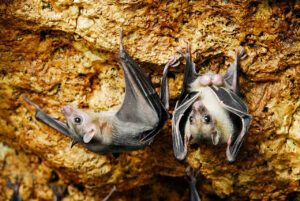Virology institute a must as viruses with ‘pandemic potential’ found in PHL

By Patricia B. Mirasol, Reporter
THE PHILIPPINES should establish its own virology and vaccine institute considering that the country has three viruses that are in the same family as pathogens identified by the World Health Organization as having “pandemic potential” — with a possible fourth on the horizon, according to a wildlife biologist.
The three viruses, all found in bats, are the Reston ebolavirus, the antibodies of which were found between 2008 and 2009 in bats captured in the forests of Diliman, Quezon City, and Atimonan, Quezon; bat coronavirus, the antibodies of which were found in 66.5% of bats across five areas in Region IV-A, according to a 2012 study; and the henipavirus, which caused an outbreak with a mortality rate of between 45% and 70% in Sultan Kudarat in 2014 (horse-to-human and human-to-human transmission occurred; the most likely source of horse infection was fruit bats).
The fourth — a poxvirus (the family of viruses that causes monkeypox) — was found in a survey of Biak-na-Bato National Park in Bulacan in March 2020, a few days before the country was locked down due to coronavirus disease 2019 (COVID-19).
“It would be the first record in Asia,” said Phillip A. Alviola, a wildlife biologist and an associate professor at UP Los Baños’ Institute of Biological Sciences, who was part of the team that found genetic evidence of the presence of the poxvirus.
“We haven’t yet found any viruses from bats that have made the transmission jump to humans but we did find … SARS CoV-2-related coronaviruses in bats. The similarity goes up to more than 90% to SARS CoV-2,” he said at an Oct. 10 forum organized by the National Academy of Science and Technology.
The findings of the survey conducted by Mr. Alviola’s team will be published this year.
HEALTH SECURITYEstablishing a virology and vaccine institute will also help address issues such as climate change, disease emergence, disasters, habitat degradation, urbanization, poverty, and competition within the ecosystem, said Noel Lee J. Miranda, an independent regional consultant who specializes in emerging pandemic threats.
“Biodiversity fragility drives zoonotic disease [diseases from animals] emergence. That’s why I’m saying let’s not just focus on diagnostics, vaccines, and therapeutics,” he said.
“We need to collectively address pandemic risks and emerging pandemic threats at their source,” he added, citing as an example the unregulated wildlife markets where wild animals are traded and sold.
While the number of bat and bird species in Southeast Asia makes it vulnerable to zoonotic diseases, it may also hold the key to the solution. “Our rich biodiversity is still not well understood, and therefore remains untapped for its full benefits for health and wellness,” said Theresa Mundita S. Lim, executive director of the ASEAN Centre for Biodiversity.
The virology and vaccine institute will coordinate research efforts and act as a lead agency, said Dr. Jaime C. Montoya, executive director of the Department of Science and Technology Philippine Council for Health Research and Development.
“We hope this can be further supported and institutionalized through appropriate legislation,” he said.
The Bases Conversion and Development Authority has allocated a five-hectare land in New Clark City for the construction of the proposed virology and vaccine institute.




